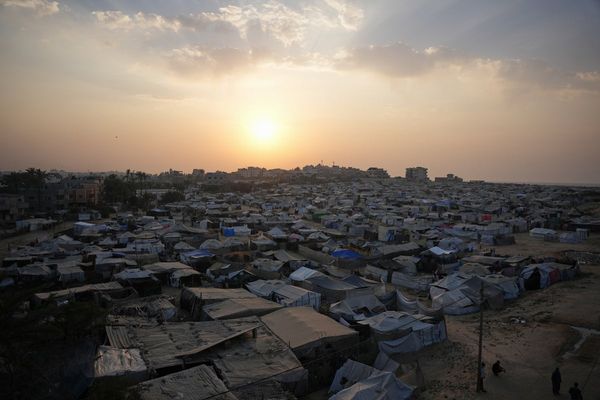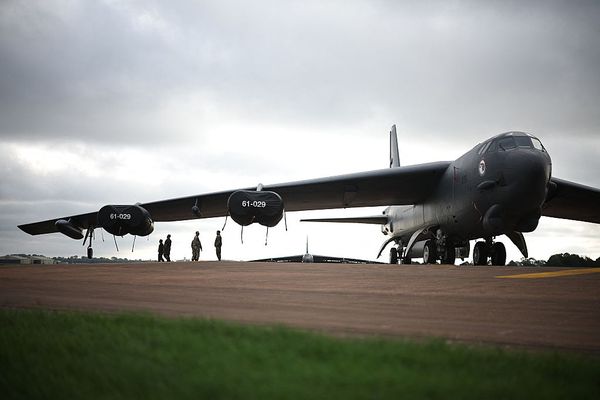
Qantas begins flights from Perth to Paris this week in an attempt to capture people flying to the Olympics or heading on a European summer holiday.
There has been the usual round of public relations spin with Qantas chief executive Vanessa Hudson saying: “This route has been on our wish list for a while and we think customers will be as pleased as we are to see it go on sale.”
News Corp gushed: “Curated by Qantas creative director of food, beverage and service, Neil Perry, passengers are in for a treat — with some of the in-flight menu highlights including a creme brulee, bouillabaisse of snapper and Skull Island prawns and the pithivier of chicken and tarragon with onion puree.”
But beneath the corporate smoke and mirrors, Qantas’ long-haul aircraft are struggling, hampered by a Joyce-era underinvestment in aircraft. There is also the continued overwork and understaffing issues in the carrier’s maintenance division, and industrial relations trouble at its Los Angeles base, which was set up as part of the company’s attempt to send major maintenance offshore.
At the heart of Qantas’ long haul problems is the lack of any investment in the fleet by former chief executive officer Alan Joyce, who only announced the purchase of new aircraft towards the end of his tenure – none of which have arrived. This has left Qantas with a fleet of 26 A330s (average age 17.4 years, putting Qantas 136th out of 150 airlines operating 330s), nine A380s (average age 14.5 years, putting Qantas 10th out of 11 airlines operating these double-decker jumbos) and 14 B787s. The average age of the 787s is 5.1 years, putting Qantas 18th of 76 airlines operating 787s. But the problem is that Qantas is flying them harder.
“I don’t know how they achieve the flying they do with the 787 aircraft,” a Qantas engineer told Crikey.
“They are all long haul or ultra long haul flights with minimum ground time. Sydney may get one every two days with a ground time of eight hours or more, which helps, but if you still don’t have people to work on them, that ground time is wasted.”
Other pilots who spoke to Crikey echoed these comments, saying that aircraft were not getting enough down time.
“In general there is no ground time, no spares, no people, or the spares are where the aircraft isn’t,” the engineer said.
“For example Los Angeles (LAX) keeps a lot of 787 and 380 parts meaning a 24 to 48 hour delay if the aircraft breaks in Sydney and the parts are in LAX. This is just plain stupid planning and management.”
Engineers said that Qantas had employed more engineers but the company was still short.
When an A330, A380 or B787 breaks, it has to wait until night shift to get a decent amount of manpower to work them as the day shift manpower is busy just getting operational aircraft in the air.
“The new blood takes time to get up to speed with Qantas procedures and in effect can initially slow you down,” the engineer said.
“The 330s are old workhorses, flying everywhere from India and Los Angeles to Singapore, Tokyo and Manila,” one pilot told Crikey. “But they are competing with far newer aircraft like B787s and A350s from other airlines.”
Qantas still has four of its A380s stranded in Abu Dhabi, awaiting major maintenance and new cabin fitouts.
”They won’t all be operational until the end of 2025, also a dumb short-sighted management decision,” the engineer said.
Pilots said maintenance problems were causing serial delays and cancellations and too often affecting passenger connections, especially in the United States.
“If you don’t have spare parts on the ground, it’s not just a question of delaying the flights, they often just cancel because that’s the quickest way to sort out the problems,” one pilot said.
Qantas deals with such cancellations by moving passengers around. Ahead of the school holidays which are currently underway, passenger loads to the US have remained light, pilots said. So, for example, Qantas could cancel one of the Sydney and Melbourne to Dallas flights.
“If a Melbourne flight is cancelled some passengers are sent to Sydney to catch the Dallas flight, some sent on the Melbourne to Los Angeles flight and then on to Dallas or their final destination, and some sent on code-share partner American Airlines to Los Angeles and then onwards,” the pilot said.
“But this causes a huge number of missed connections, Qantas knows full well it has no back up, no slack.”
Qantas has no more 787s arriving, to begin replacing the A330s, until 2027.
As the new financial year begins with new chairman John Mullen finally on board, Qantas is also facing mounting industrial relations headaches including with engineers at its Los Angeles base. Approximately 150 Qantas aircraft maintenance engineers (AMEs) voted to join the International Association of Machinists and Aerospace Workers (IAM) in April. Earlier in the year engineers warned the airline about threats to outsource their jobs that violated US federal law, and said they should be treated better by Qantas management after they issued a letter asking the airline to “cease and desist intimidating Qantas employees by threatening their jobs and interfering with their right to support having a union”.
Qantas is in dispute with Perth-based Network Aviation pilots as well as cabin crew, with the usually compliant mainline pilots union Australian & International Pilots Association’s committee of management rejecting a new draft Enterprise Bargaining Agreement that has sent negotiators back to the drawing board.
“We remain acutely aware of your frustration surrounding the company’s need for you to accept a pay freeze and the associated flow on effects this causes,” AIPA President Tony Lucas said in a note to his members.
“It has been clear significant levels of anger and a lack of trust still exist within the pilot community and with it, dissatisfaction with aspects of this proposed deal.”
Meanwhile, adding further to Australian aviation woes, yet another Middle Eastern competitor, Etihad, has launched a global pilot recruiting program as it aims to double its fleet in coming years. So it’s little wonder Australian pilots — at both Qantas and Virgin — are fighting airline management for a better deal.







